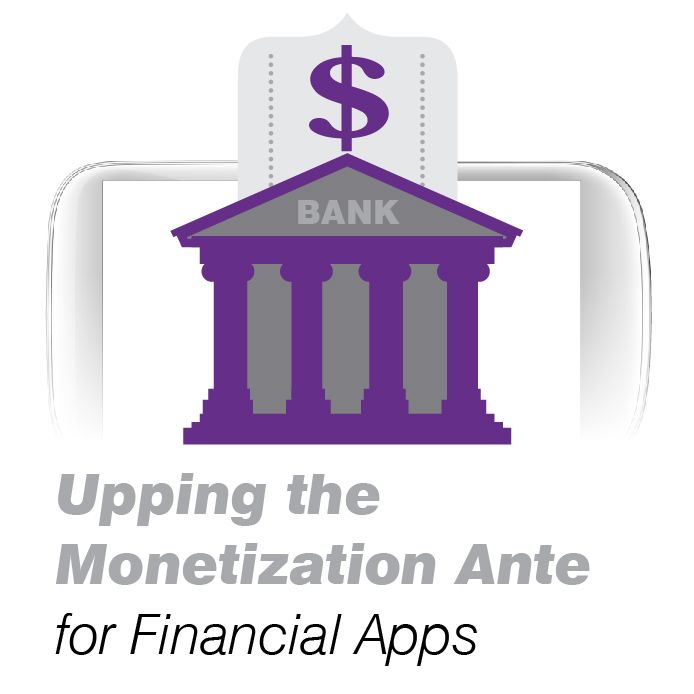By Tim Cronin
According to Varolli Corporation’s “Can
You Bank on Your Banking App?” study, financial institutions just aren’t
following through (monetizing) on the high rates of consumer use of financial
apps. The study found that 44 percent of consumers used a banking app, 8
percent had downloaded an app but not used it, and the remaining 48 percent had
never downloaded a mobile banking app. One of the more telling findings of the
report is that consumers want to be able to conduct sophisticated functions
such as depositing checks and receiving real-time notifications from banking apps.
But the good news is that some financial institutions are
doing mobile well and right. Take Wells
Fargo, for example. With more than 9,000 stores and 12,000 ATMS nationwide,
Wells Fargo has smartphone apps for Android, BlackBerry, iPhone and Palm
devices as well as a mobile site and a text banking program, followed by its
iPad app that was released in December 2012. It has also rolled out its Send
& Receive Money feature, which lets Wells Fargo and Bank of America clients
receive and send money to each other. The service works by using an email
address or mobile phone number. As Brian Pearce, Senior Vice President and Head
of the Retail Mobile Channel for Wells Fargo, stated: “The key for us it to not
[let mobile] compete with other channels. We know that people have adopted this
mobile lifestyle, and we want to make sure we are doing everything we can do to
manage their finances while on the go and serve all customers in that manner.”
In addition to apps released by major financial
institutions, there are plenty of other financial apps that are both useful for
consumers and monetize for app developers. Here are three financial apps that
are doing a good job of monetizing (or are well on their way to doing so).
Mint
Many financial apps allow users to track their personal expenditures,
but the Mint app for iOS and Android goes beyond the basic math of mobile
banking and lets users create and monitor their budgets. In today’s economy,
consumers are especially concerned about keeping their finances in check. To
monetize an app of this kind, it’s important that your monetization strategy
takes that into account. What the Mint app does that makes it so cool (and easy
to monetize) is that it suggests similar financial services/products, e.g.
credit cards, in the form of sponsored ads. What really makes this work for
Mint is that these suggestions don’t feel or look like ads to users (and thus,
are less likely to irritate/turn them away). In fact, the Mint app will even
recommend non-sponsored services if they will save users more money, as opposed
to a sponsored product. Not only does this practice provide users with a more
relevant and useful user experience, but it adds a layer of trust which will
likely get users to click on in-app ads, but also recommend and share the app
with other users.
Pageonce
Paying bills can get complicated, and Pageonce works with
consumers to make that easier. Available on all mobile platforms, Pageonce
provides its users with reminders and the ability to pay their bills through
its app. Pageonce charges a small transaction fee when users pay bills via a
credit or debit card, but they are currently looking to expand their
monetization strategy and are possibly looking at ad platforms. It will be
interesting to see how Pageonce incorporates advertisements or another strategy
and how that will translate to consistent ROI and revenue for app developers.
Expense Manager
One of the advantages of Expense Manager, an Android app, is
that it lets users track their expenses in multiple currencies and take photos
of receipts. Expense Manager utilizes relevant ads as its monetization
strategy, but in deference to its professional audience, allows users to
upgrade to an ad-free Pro version for $4.99. The important thing to note with
Expense Manager’s monetization strategy here is that ads only appear on the
bottom of the account summary page, so that they are not disturbing or cluttering
the app experience. Even more important is that when ads are served in the free
app, the ads are targeted and relevant, thereby driving an increase in
click-through rates.


Mobile app monetization technique makes the online businesses to acquire higher demands or visibility than the ordinary one.
ReplyDeleteHi!
ReplyDeleteDamn true!
Thanks
Topic tells the basic information celebrity birthdays,....
ReplyDelete